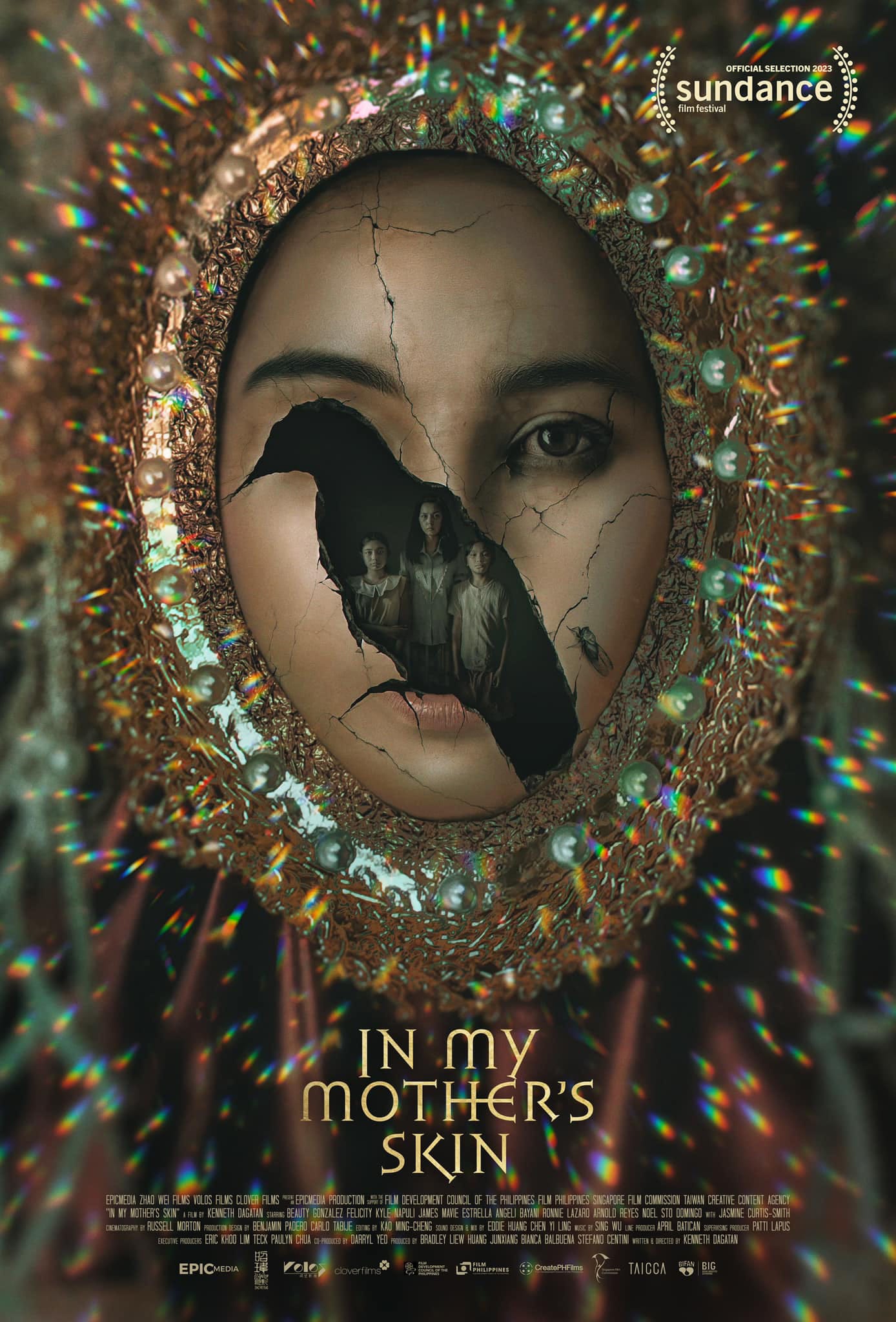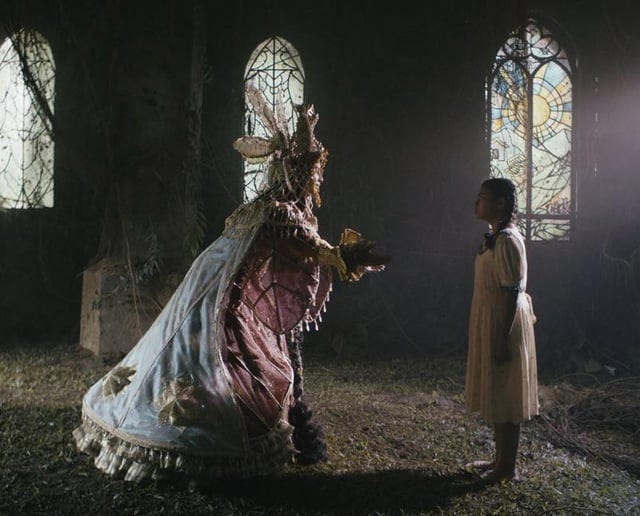In My Mother’s Skin
Never eat candy that’s been left out in a witch’s hut, kids.

In the waning days of World War 2, a young Filipino girl named Tala—her father taken by the Japanese, her family running out of food, and desperate to find a cure her dying mother—ventures deep into the jungle, looking for help, only to discover a glittering, rainbow-hued fairy in a tiny overgrown house, a fairy bearing wondrous gifts… gifts that come with a high price.
Set in an isolated manse that looks to be on the verge of being swallowed by the surrounding jungle, In My Mother’s Skin is a Filipino folklore horror film, a story that sits somewhere between fairy tale nightmare and historical allegory, that is told with a similar spirit as the Grimms’ Fairy Tales, especially Hansel and Gretel, and is heavily shaded by the works of Guillermo del Toro, especially Pan’s Labyrinth. It’s a story that pits the classic kind of supernatural horror that often comes with making a deal with a trickster, against the real world horrors common to humanity at war, in this case, Japan’s occupation of the Philippines in WW2.
Though the War itself is mostly background noise, it is ever-present. The film opens with the children whispering to each other: “Did you hear about the baby that was bayoneted in Manila?” War planes drone past overhead. The characters regularly stumble across the atrocities committed by the occupying Japanese forces, mostly in the form of bloated corpses left to rot within the jungle.

The fairy is a luminous and beautiful creature, golden and glittering, and absolutely willing to right all the wrongs in young Tala’s life, telling Tala that only those of pure innocence could find her. From the very start, the fairy beguiles Tala, never quite lying to the girl, but very obviously never telling her the full truth either, like when she gifts young Tala with a magical insect that will cure her mother, or… “maybe make a home within her skin,” added as a casual aside. Which… y’know, seems like a red flag, but Tala is a frightened, desperate child. She never makes the connection that the magical insect she is being offered is also one of the same winged insects that serve the fairy, telling her everything, the same ones we (the audience) just saw swarming a bloated corpse. Tala takes the gift home to her mother.
It does not go well.
Mom gets better, yes, but Mom is not okay. She has a weirdly pulsing growth at the base of her neck. She growls, and scampers about at night on all fours. At one point, she throws up a whole crow. She also eats the family dog. And a couple of people too. Things get messy, is what I’m saying, and only get worse from there. Like I said, the story has a lot in common with the original versions of The Grimms’ Fairy Tales.
Poor Tala.
The film is gorgeous. Lush green jungles. Silvered moon-lit nights. The fairy’s overgrown house in the woods is green with soft moss, and twined with branches, with mellowly glowing stained glass windows. The humidity and the close press of the jungle is apparent in every frame. It all looks amazing. but the story itself feels oddly paced, and a little too restrained to be totally satisfying. It’s a simple tale, a reminder to be careful what you wish for, but that familiarity somewhat works against the film, dulling its surprises, because, I mean… what do you think is going to happen when some forest creature offers you a magical cure to whatever ails you, and all seemingly without any strings attached? If your answer is, nothing bad, well… you might really enjoy this film.
It’s maybe not fair to say that Tala should’ve known better, because the story is what the story is, but at the same time, there’s just no way around the fact that the audience does know better, and that’s the real problem here, I think. It’s not fair to the film, but it’s the truth, and it will probably impact your enjoyment of this film.
